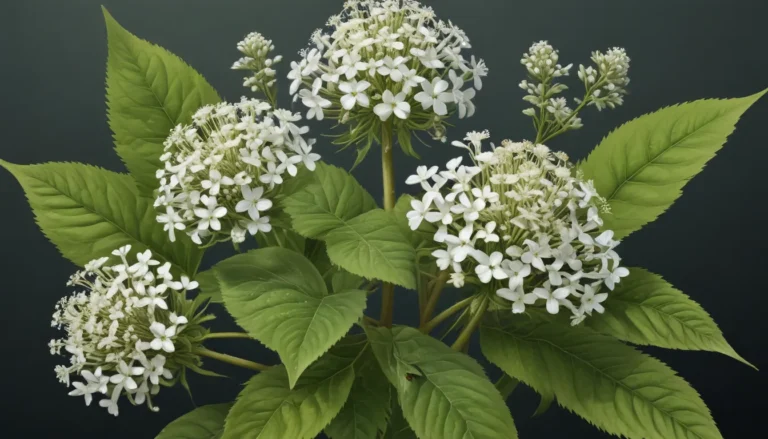The pictures we use in our articles might not show exactly what the words say. We choose these pictures to make you interested in reading more. The pictures work together with the words but don’t take their place. The words still tell you the important facts.
Welcome to the intriguing world of the Arctic willow, a remarkable plant that thrives in the harshest environments of the Arctic and subarctic regions. Despite its small stature, the Arctic willow, scientifically known as Salix arctica, plays a significant role in supporting local wildlife and maintaining fragile ecosystems. Let's explore 11 captivating facts about this resilient plant, shedding light on its unique characteristics, ecological importance, and remarkable adaptations that enable it to flourish in one of the most challenging environments on Earth.
Unveiling the Arctic Willow
The Arctic willow is a tough little plant that symbolizes resilience and biodiversity in the challenging Arctic and alpine regions. This hardy perennial belongs to the Salicaceae family and is native to North America, Europe, and Asia. Its ability to survive in harsh, cold climates makes it a subject of fascination for botanists and nature enthusiasts alike.
Thriving in Harsh Environments
Thriving in some of the harshest environments on the planet, the Arctic willow is a crucial component of fragile ecosystems in the Arctic tundra and alpine regions. With its ability to withstand extreme cold, strong winds, and poor soil conditions, this plant plays a vital role in stabilizing the soil and preventing erosion.
A Low-Growing Shrub with Silvery Leaves
The Arctic willow typically grows as a low, spreading shrub, rarely exceeding a height of one meter. Its narrow, elongated leaves covered with a silvery-white fuzz give the plant a distinctive appearance. These adaptations help protect the leaves from harsh winds and reduce water loss through transpiration.
Serving as an Important Food Source
The Arctic willow is a key player in the Arctic and alpine food web, providing vital sustenance for various herbivores, including caribou, muskoxen, and Arctic hares. Its tender young shoots and leaves are especially valuable during the harsh winter months when food sources are scarce.
Champion of Erosion Control
Due to its extensive root system and low-growing habit, the Arctic willow is widely used in erosion control and land reclamation projects. Its ability to stabilize soil and prevent erosion makes it a valuable asset in restoring damaged landscapes and maintaining ecosystem balance.
Popular Ornamental Plant in Landscaping
In addition to its ecological significance, the Arctic willow is a sought-after choice as an ornamental plant in landscaping and gardening. Its compact size, attractive foliage, and ability to thrive in challenging conditions make it a favored option for cold-climate gardens.
Adaptable to Various Soil Types
One of the remarkable traits of the Arctic willow is its adaptability to different soil types, including sandy, gravelly, and clay soils. This versatility allows the plant to colonize diverse habitats and contribute to the ecological diversity of its native regions.
Clonal Growth for Expansion
Arctic willows exhibit clonal growth, reproducing asexually through the production of new shoots from their extensive root systems. This adaptation enables the plant to form dense stands, further enhancing its role in stabilizing soil and supporting wildlife populations.
Symbolizing Resilience
The Arctic willow's ability to thrive in extreme conditions has established it as a symbol of resilience in the Arctic and alpine regions. Its tenacity and endurance in harsh environments exemplify nature's remarkable adaptability and strength, inspiring admiration and awe.
Supporting Biodiversity
By providing food, shelter, and habitat for a variety of wildlife species, the Arctic willow contributes to the overall biodiversity and ecological balance of the fragile Arctic and alpine ecosystems. Its presence sustains a web of life in these remote and challenging environments, highlighting the interconnectedness of species.
Exploring the Arctic Willow’s Realm
In conclusion, the Arctic willow is a fascinating and resilient plant that plays a crucial role in maintaining ecological balance in harsh environments. Its adaptability, unique characteristics, and ecological importance make it a valuable component of the fragile Arctic ecosystem. Studying and appreciating the Arctic willow not only enriches our knowledge of biodiversity but also deepens our understanding of the intricate web of life in extreme environments.
FAQs
What are the main adaptations of the Arctic willow?
The Arctic willow has several adaptations to survive in its harsh environment, including small, leathery leaves to minimize water loss, a low, creeping growth habit to avoid exposure to harsh winds, and a deep root system to access water in the frozen soil.
Is the Arctic willow important for wildlife in the Arctic region?
Yes, the Arctic willow is a crucial food source for various Arctic animals, including muskoxen, caribou, and lemmings. Its dense growth also provides shelter for nesting birds and small mammals.
With a deeper understanding of the Arctic willow's unique qualities and ecological significance, you can now appreciate the beauty and resilience of this extraordinary plant. Join us in celebrating nature's ability to thrive in the face of adversity and discover the wonders of the Arctic willow as it continues to flourish in some of the most challenging environments on Earth.






